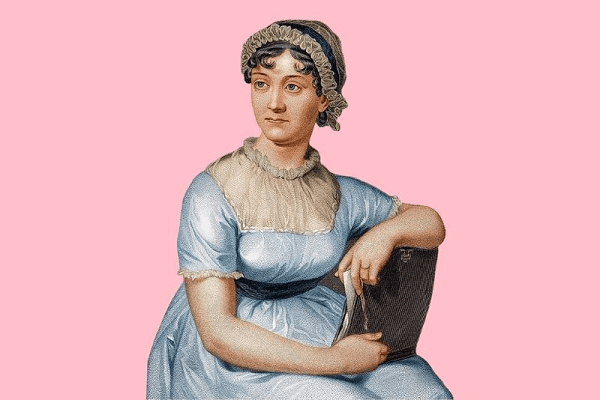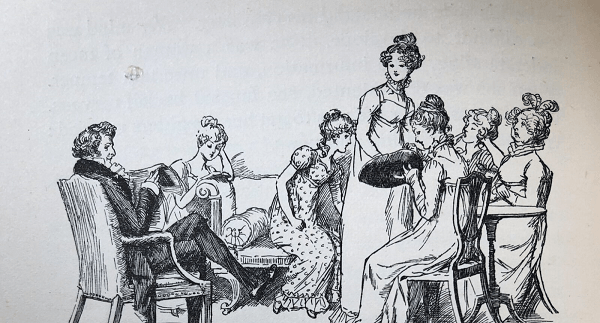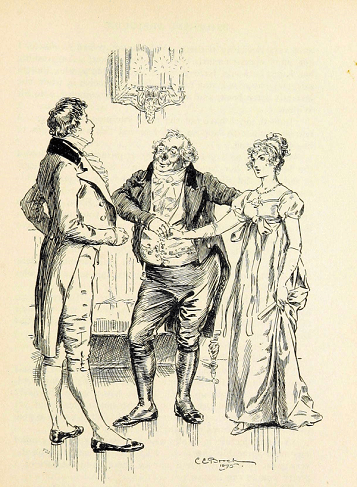Pride and Prejudice by Jane Austen Plot SummaryAbout the Author: Jane AustenJane Austen was an English author who, through her portrayal of common people going about their daily lives, originally gave the novel its essentially modern character. She was born on December 16, 1775, in the region of Steventon, Hampshire, England, and died at the young age of forty-one years on July 18, 1817, in the region of Winchester, Hampshire. Her death is said to be caused due to a disease called Addison's disease, a disease known to completely eradicate the adrenal glands of its victim. Sense and Sensibility (1811), Pride and Prejudice (1813), Mansfield Park (1814), and Emma (1815) are among the few tremendous books she authored during her lifetime. She eloquently portrayed the lives of the English middle-class population throughout the early 19th century in the works mentioned above and in "Persuasion and Northanger Abbey", released in 1817. In addition to becoming timeless classics that enjoyed critical acclaim and widespread success for over two centuries after her death, her writings established the novel of manners for the time. 
Born as a daughter in the household of a Hampshire clergyman, Jane Austen was the seventh of eight children, and she grew up in a loving, close-knit family. Her writings were often influenced by the lives of her brothers?two pastors, two admirals, and one who was taken in by affluent relatives?who all had successful jobs and families. She began writing when she was quite young, and as surprising as it was for many to digest; she had many juvenile works in her name, including theatrical sketches, parodies, and poems at such a young age. Sir Walter Scott praised her for making "commonplace things and characters interesting from the truth of the description and the sentiment" in his journal, contrasting her "exquisite touch" with his own "Big Bow-Wow" style. When Austen was seven years old, she and her sister Cassandra were sent away to Oxford for schooling. However, after a while, the sisters contracted typhus and were returned to Steventon. Eventually, they went to Reading's Abbey School when Austen was nine. However, the girls were quickly expelled since their father couldn't afford the tuition. But, with thorough dedication and passion for literature, the girls continued their studies at home with the aid of their brothers and father even though their formal education was now over. Austen began her professional writing journey in 1795, when she was roughly 20, and later produced her "First Trilogy". She started writing Elinor and Marianne, an entire book in letters that would eventually be revised and given the new title Sense and Sensibility due to increased social interactions and flirtations. She penned First Impressions the following year, but a publisher rejected it in 1797. 'Pride and Prejudice' had its first iteration during that time. In 1798, she started writing another book, Susan, which eventually became Northanger Abbey. Despite early offers, neither Jane nor Cassandra married. However, given the time, this circumstance was common. In the era of Jane Austen, about 10-35% of people were still unmarried, maybe due to the increased difficulty of finding a compatible partner within one's social class. Jane was a single woman, but this did not bother her. She was free to focus on her writing and had the chance to keep a close eye on the behaviour of individuals around her because she didn't have a husband. Jane Austen is believed to have led a tranquil existence throughout her life. Few of her manuscripts still exist, but most of her written communication was destroyed or substantially edited by Cassandra, her sister, just before she passed away. Therefore, the information available about her is scarce and fragmentary. She was a woman of stature, humour, and sharp intelligence, which may be inferred from the letters that have survived and from the personal acquaintances she left behind. Family stories about Austen paint her in a gentle, even angelic light. Still, critics who have read her writings and the fragments of her correspondence think she was more intelligent than her relatives would have the public believe. Pride and Prejudice SummaryPride and Prejudice by Jane Austen is a novel set-in 19th-century England, focusing on the Bennet family, with five daughters (Jane, Elizabeth, Mary, Kitty, and Lydia) but no sons. The main character, Elizabeth Bennet, is a headstrong and independent young woman who finds herself in a complicated and somewhat humorous romantic entanglement with the wealthy and haughty Mr Darcy. The novel begins with the arrival of Mr Bingley, a wealthy and amiable gentleman who has rented a large estate in the Bennets' small town. Mrs Bennet, eager to marry off her daughters, immediately begins plotting to ensure that Mr Bingley falls in love with one of his daughters. During a ball hosted by Mr Bingley, Elizabeth meets and quickly forms a negative opinion of Mr Darcy, who she perceives as arrogant and aloof. 
As the story progresses, Mr Darcy (Bingley's close friend) shows a more human side of himself, and Elizabeth realizes that her initial judgments of him may have been unfair. Meanwhile, Elizabeth's sister, Jane, develops a romantic relationship with Mr Bingley. Jane and Mr Bingley's romantic relationship began when they first met at the Netherfield ball. They were immediately attracted to each other and spent much time together throughout the evening. However, their relationship faced many hardships, mostly due to the interference of Mr Bingley's haughty sister and his best friend, Mr Darcy. Mr Darcy disapproves of the relationship because he thinks Jane does not have a strong enough social status to match Bingley's wealth and prestige. He even went as far as to tell Bingley that Jane did not have genuine feelings for him and was only interested in his money. This caused Bingley to become unsure about his feelings for Jane, and he eventually left Netherfield, breaking off the relationship. Jane, who had fallen deeply in love with Bingley, was heartbroken and struggled to come to terms with the sudden end of their relationship. She tried to move on, but her heart remained with Bingley. Meanwhile, Bingley begins to regret his decision and realizes he has made a mistake in leaving Jane. He eventually returned to Netherfield, where he and Jane were able to reconcile and rekindle their love. Despite the interference of Mr Darcy and the initial hardship they faced, Jane and Bingley's love for each other was strong enough to overcome these obstacles. They eventually got engaged, and their love story inspired Elizabeth and Mr Darcy's relationship. Throughout the novel, the characters navigate their time's complex social customs and expectations, with many instances of pride and prejudice hindering their relationships and causing misunderstandings. Mr Collins proposes to Elizabeth, who is also a distant cousin of the Bennet family. Still, she declines his offer, leading to tension between them and Elizabeth's mother, who believes that any marriage proposal should be accepted. Soon after, Elizabeth is invited to visit Charlotte Lucas, her best friend, who has recently married Mr Collins. When Elizabeth visits, she finds Charlotte satisfied with her marriage to Mr Collins, despite his flaws. Meanwhile, the Bennet family is visited by Mr Collins's patroness, Lady Catherine de Bourgh, who is also Mr Darcy's aunt. Lady Catherine disapproves of Elizabeth and warns her against marrying Mr Darcy, whom she believes is destined to marry her own daughter. Elizabeth is unimpressed by Lady Catherine's attempts to intimidate her. Mr Darcy's initial impression of Elizabeth is not favourable due to her lack of social standing. Still, as he gets to know her better, he begins to admire her wit and intelligence. He is attracted to her independent spirit and ability to stand up for herself. Despite this attraction, he initially struggles to express his feelings to her due to his own pride and social status. For Elizabeth, her first impression of Mr Darcy is of a proud and arrogant man, which is not helped by his initial refusal to dance with her at a ball. However, as she learns more about his character, she realizes that he is better than she first thought. Still, she resents his interference in her sister's relationship with Mr Bingley and is not swayed by his attempts to improve her opinion of him. Over time, Mr Darcy's feelings for Elizabeth grow stronger, and he comes to realize that he is deeply in love with her. He even goes against his own principles by proposing to her, despite her lower social status and the disapproval of his own family. However, his proposal is clumsily worded and insulting, which causes Elizabeth to reject him and further cements her negative opinion of him. The turning point comes when Mr Darcy writes a letter to Elizabeth, explaining the circumstances behind his interference with Mr Bingley and Jane's relationship and his own feelings for her. Elizabeth is impressed by the honesty and vulnerability displayed in the letter and begins to re-evaluate her feelings for Mr Darcy. The novel reaches its climax when Elizabeth's youngest sister, Lydia, elopes with Mr Wickham, a man with a reputation for being a scoundrel. This scandal threatens the reputation of the Bennet family and the happiness of all involved. However, Mr Darcy intervenes, using his influence to force Mr Wickham to marry Lydia, thus saving her reputation and that of her family. This action shows his responsibility, concern for the family, and love for Elizabeth. He does not want her to suffer the consequences of her sister's actions, and he goes out of his way to protect her family's reputation. In addition, Darcy starts to open up to Elizabeth about his past and struggles with his pride and prejudices and then speaks about how he has started to see things clearly now and doesn't care about social status as long as he truly loves Elizabeth. He also reveals the truth about Mr Wickham's deceitful character and explains his own role in separating him from his sister. 
These moments of vulnerability and honesty allow Elizabeth to see Darcy in a new light and to understand him better. She begins to see that his cold demeanour is a defence mechanism for his own insecurities and that he truly cares for her and her family. In the end, Mr Darcy and Elizabeth confess their love for each other and marry together. The novel ends on a hopeful note, with the characters learning valuable lessons about the importance of social norms, personal growth, and true love. Ultimately, Elizabeth and Mr Darcy are able to overcome their pride and prejudice toward each other and confess their love. Elizabeth's rejection of Mr Darcy's initial proposal was due to her belief that he had mistreated her sister Jane and due to his arrogant nature. However, after learning the true nature of Mr Darcy's actions and his feelings towards her, Elizabeth comes to realize that she had misjudged him. Overall, Pride and Prejudice is a timeless classic that explores the complexities of social customs and relationships in 19th-century England. The characters are vividly drawn, and the plot is filled with twists and turns that keep the reader engaged. Austen's commentary on societal expectations and gender roles is subtle yet profound, making the novel relevant to contemporary readers. Related Questions/AnswersQ1. How does Mr Collins represent the social hierarchy of England?Ans. Mr Collins represents the social hierarchy of England in a very specific way. As a clergyman, he is considered a member of the gentry, but his income and status are relatively low. He is overly concerned with his own social status and constantly seeks to improve it by aligning himself with people of higher social standing. Q2. How does the character of Lady Catherine de Bourgh reflect the social norms of the time?Ans. Lady Catherine de Bourgh represents the upper-class social norms of the time, which greatly emphasize rank and lineage. She is proud of her noble birth and sees herself as superior to those of lower rank. Her character reinforces the idea that social position and family connections are more important than personal qualities. Q3. How does Elizabeth's visit to Pemberley change her opinion of Mr Darcy?Ans. Elizabeth's visit to Pemberley changes her opinion of Mr Darcy in a very positive way. She is impressed by the grandeur of his estate and the respect he receives from his staff. She also learns more about his character from his housekeeper, who speaks highly of him. Finally, when she meets him unexpectedly, he is courteous and kind, which leads her to re-evaluate her previous prejudices against him. Q4. What is the significance of the relationship between Elizabeth Bennet and Mr Darcy?Ans. The relationship between Elizabeth Bennet and Mr Darcy is a central plotline of the novel. Initially characterized by misunderstanding and hatred, their relationship gradually evolves as they understand and appreciate each other's true character. Their union at the end of the novel represents a triumph over societal expectations and the triumph of true love. |
 For Videos Join Our Youtube Channel: Join Now
For Videos Join Our Youtube Channel: Join Now
Feedback
- Send your Feedback to [email protected]
Help Others, Please Share









